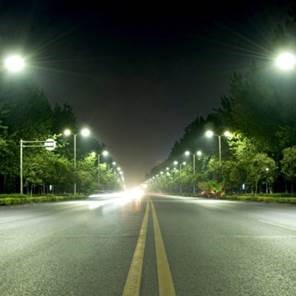LED luminaires for street lighting have the benefit of precision, allowing them to be programmed to minimize light pollution, increase visibility, and maximize efficiency by directing light to the exact desired area. Proper technique in the design of street lighting is crucial for a safe and efficient nighttime visual environment in any setting. The quality of lighting is vital for the safety of motorists on the road as well as pedestrians on sidewalks or crosswalks.
desired area. Proper technique in the design of street lighting is crucial for a safe and efficient nighttime visual environment in any setting. The quality of lighting is vital for the safety of motorists on the road as well as pedestrians on sidewalks or crosswalks.
How important is it?
Well-lit paths can instill a sense of security in pedestrians and allow them to feel more comfortable exploring the nightlife in an area or even just walking home. Welsh and Farrington (2008) found that improved street lighting decreased crimes by 21% compared with an area where street lighting was left in its existing condition, sporting old and or broken lamps. Another report by SWOV found a relatively large portion of night-time accidents occur on unlit sections of roadways. Thus, ensuring that the spacing of the street lights do not allow for unlit sections, the frequency of night-time accidents should decrease.
How do you do it?
To ensure consistent illumination of streets and roadways, factors such as street width, pole height, and illumination levels should be taken into account. Equations are available to determine the appropriate amount of space needed between each pole. The Department of Transportation (DOT) has defined typical pole spacing for standard roadway lighting as well as highmast lighting. Coordination with street elements such as tree canopies and utility equipment should be performed as well. Lighting simulation programs as well as photometric modeling can be used to take all of these variables into account and output a design of light spacing that creates a uniform and efficient street.
What’s Photometric Modeling?
Photometric modeling is the use of a model to show where lights will be placed and the layout of the light spread onto the street and or sidewalk. It can also be used to help facilitate the selection process of appropriate LED fixtures. Models of the existing luminaries are developed as baselines for the proposed luminaire models to be compared to. These models are based on real world parameters and are made up of calculation points that show the light level reading (foot candles) at that specific point, as well as isolines to help identify the distribution patterns and levels of light intensity. An example of this model can be seen below as a before and after of a street lighting upgrade to LEDs. The “after” model represents a more uniform light and well-lit street. This can be seen by the slight overlap of light in between the far left fixtures.
Street Light Fixtures Photometric Model Before:

Street Light Fixtures Photometric Model After:

Save 60-75% on Street Lighting Guaranteed With Wendel Energy Services
Installing lower wattage and longer lasting LED street lights reduces energy and maintenance costs by 60-75%. Wendel’s professional, in-house staff will perform a no cost/no pressure Preliminary Assessment of the potential for savings with your community’s street lighting. These same professionals can then design and implement a street lighting upgrade with 100% cost transparency.
